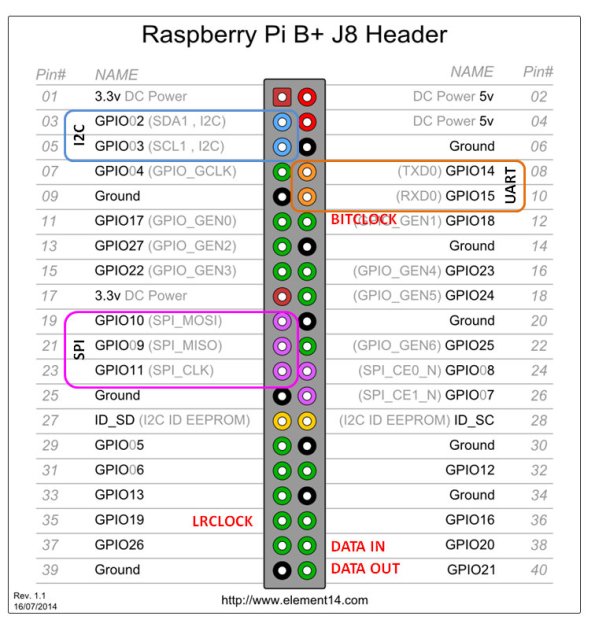This is an old revision of the document!
Table of Contents
Audio Injector Installation
Audio Injector is a audio hat for the Raspberry Pi. This sound card comes with two inputs and two outputs, plus a build in microphone.
Installation
This manual is made for an Raspberry Pi 4 running Raspian Buster on it.
After connecting the Audio Injector to the Raspberry Pi change some configurations, in:
$ sudo nano /boot/config.txt
Comment out:
# dtparam=audio=on
And type in:
dtoverlay=audioinjector-wm8731-audio
ctl + o for saving, press return and ctl + x to leave.
Reboot your Raspberry Pi:
$ sudo reboot
Alsa Mixer Settings
https://github.com/Audio-Injector/stereo-and-zero
There are two reference alsa mixer files which will allow you to setup default output with either line input or microphone input :
Download:
$ wget https://github.com/Audio-Injector/stereo-and-zero/archive/master.zip
Unpack it:
$ unzip master.zip
go into the folder:
$ cd stereo-and-zero-master/
and run:
$ alsactl --file asound.state.MIC.thru.test restore $ alsactl --file asound.state.RCA.thru.test restore
Test
For the 10 kHz test follow the instructions on https://github.com/Audio-Injector/stereo-and-zero.
Then install sox:
$ sudo apt install sox
In /home/pi/stereo-and-zero-master/ run:
$ sudo chmod 755 audioInjector-test.sh $ ./audioInjector-test.sh
Simple Play and Record
Recording:
$ arecord -r 48000 -f S16_LE -c 2 -d 20 test.wav
Playing back:
$ aplay test.wav
I2S and I2C Pins
Monospaced Text
The following pins are used by the sound card, don't use them for anything else!
Beside the power (5V and 3V3) and ground (GND) the I2S bus needs the following pins:
GPIO 18 (Pin12) BIT CLOCK (BCLK); GPIO 19 (Pin 35) IN and OUT LR CLOCK (DACLRC and ADCLRC); GPIO 20 (Pin 38) DATA IN (ADCDAT); GPIO 21 (Pin 40) DATA OUT (DACDAT);
And the I2C bus needs these pins:
GPIO 02 (pin 03) SDIN GPIO 03 (pin 05) SCLK

graphic from:
https://hifiduino.wordpress.com/2014/11/13/raspberry-pi-b-digital-audio/
